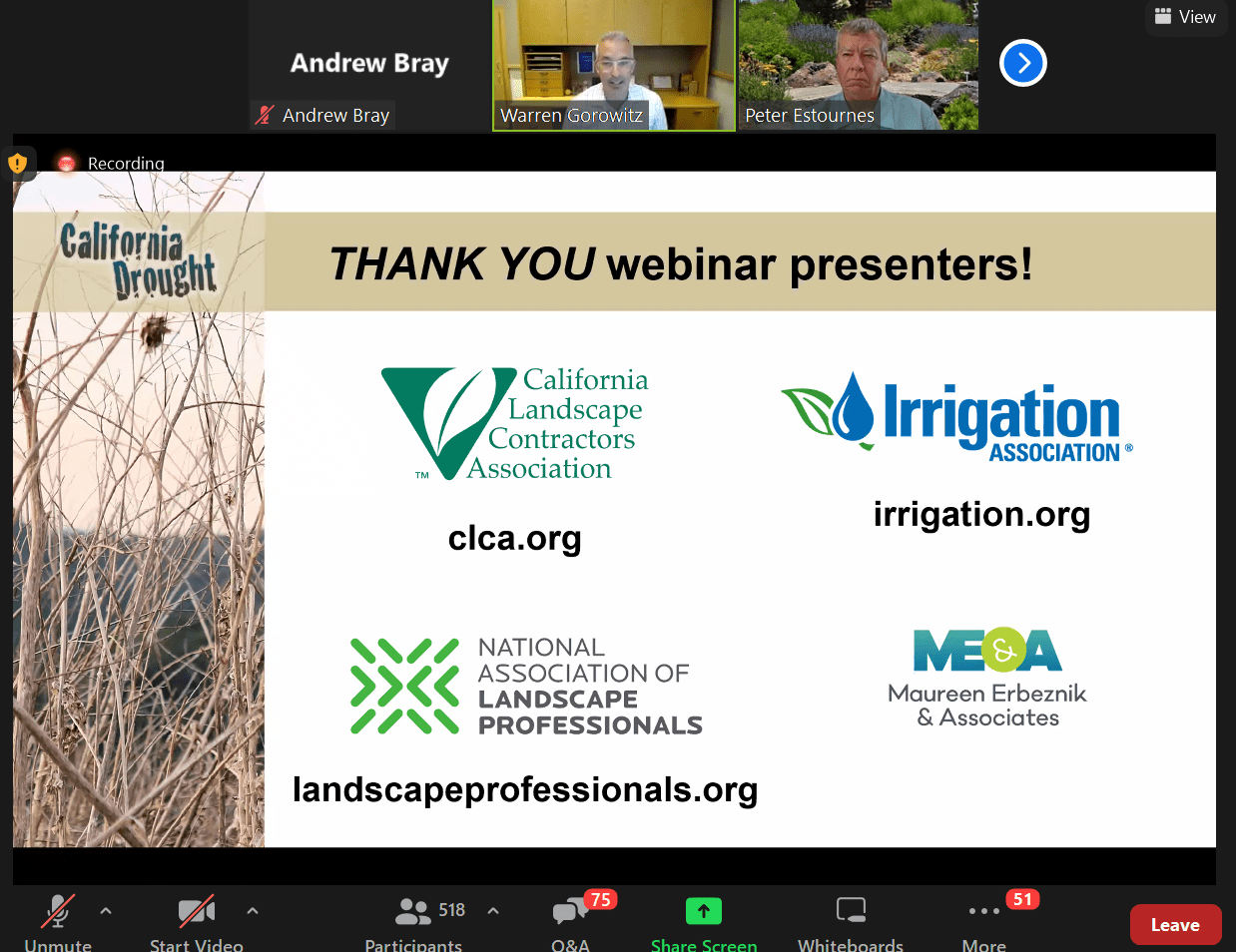
Earlier this year, the State Water Resources Control Board voted unanimously to implement a statewide ban on the watering of nonfunctional turf in the commercial, industrial and institutional sectors in California that runs for one year.
The board also put regulations in place requiring local agencies to implement water use restrictions as water supplies may be up to 20 percent lower due to extreme drought.
In a webinar hosted on June 6 by the California Landscape Contractors Association, the Irrigation Association, NALP and Maureen Erbeznik & Associates, Warren Gorowitz with Hunter Industries, Peter Estournes with Gardenworks Inc. and Maureen Erbeznik discussed the nature of the restrictions and the options available to landscape professionals.
Erbeznik explains that nonfunctional turf refers to areas that are solely ornamental. If the turf is used for recreational purposes or community events, then it is considered functional. Exemptions to the ban include spaces that use non-potable water for irrigation or areas with trees. The ban does not apply to residential yards.
Stay on Top of Local Regulations
Local retail water agencies can expand regulations at their discretion to places like multi-family housing, golf courses, cemeteries and subsurface irrigation.
With more than 400 water agencies in the state, the fluidity of restrictions and regulations will vary on each area’s water situation. In counties that are more heavily reliant on state water resources, their restrictions are more prohibitive.
For instance, Ventura water agencies have limited the watering to one day a week. The East Bay Municipal Utility District has a 10 percent mandatory water reduction, only allows three watering days per week and the watering can only be conducted between 6 p.m. and 9 a.m. They also have an 8 percent drought surcharge.
Because these regulations can vary greatly, landscape professionals are encouraged to find out who is the water provider for the properties they manage and to check that agency’s website regularly for the most up-to-date water ordinances. Erbeznik advises forming a relationship with these water providers as well to have discussions about possible exemptions if you are already watering efficiently.
She says it’s also important to communicate with your clients and let them know that you’re on top of this matter.
“This isn’t going away,” Erbeznik says. “Get ahead of it with your clients.”
Improving Water Efficiency
Estournes adds that you also should be educating your clients about the danger of overwatering. They should not be trying to water for an extended period of time during their allowed irrigation days.
He encourages checking your customers’ meters and documenting them so you can pinpoint problem areas in the landscape. Estournes says establishing and irrigating with a water budget is key to cutting back on water waste.
He says prior to water budgeting they found they were still overwatering properties. Now they use software that lets them break down the necessary watering needed in a year, month and even a day.
“Every landscape has an amount of water that is needed,” Estournes says. “If you take nothing else away from this, please look into water budgets.”
Converting properties’ irrigation systems to modern, water saving irrigation technology can also help significantly. There are a number of rebates currently available for switching to high efficiency irrigation equipment and smart controllers/timers.
“Irrigation manufacturers have done a stupendous job creating more water-efficient technology,” Estournes says.
Landscapers should also strive to form relationships with water providers through associations such as CLCA, IA and NALP as this enables them to be at the table when they are making future regulation decisions.

